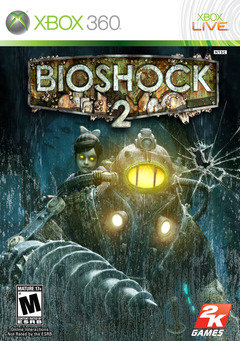8
Sonic the Hedgehog 4 - Episode 1
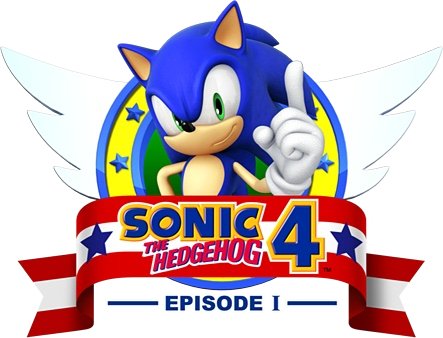 The gaming world first learned of Sonic the Hedgehog 4 back in September of 2009, under the code name “Project Needlemouse”. Sega declared a return to the franchise’s 2D roots, promising the Sonic game old-school fans have been anxiously awaiting for years. Well, there’s no doubt that if you spent the better part of your Saturday mornings as a child dashing through shuttle loops, this is definitely the Sonic game for you.
The gaming world first learned of Sonic the Hedgehog 4 back in September of 2009, under the code name “Project Needlemouse”. Sega declared a return to the franchise’s 2D roots, promising the Sonic game old-school fans have been anxiously awaiting for years. Well, there’s no doubt that if you spent the better part of your Saturday mornings as a child dashing through shuttle loops, this is definitely the Sonic game for you.
Sonic 4 picks up where the blue blur left off 16 years ago in Sonic & Knuckles, for the Sega Genesis. Dr. Eggman (or Robotnik, if you prefer) is up to his old tricks, and it’s up to none other than the fastest thing alive, Sonic the Hedgehog, to stop him; chasing the evil scientist through 4 zones (3 acts each, plus a boss battle) before a final showdown against the doctor’s ultimate creation...
Editor's Note: Jonathan is a brand new writer and contributer to The First Hour. Please welcome him! This review was originally posted at IGN.
Game Dev Story
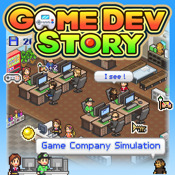 I’ve played a few iOS games this year, mostly just picked stuff up from word of mouth or something a friend developed. I started hearing about this little simulation title called Game Dev Story, and after reading up on the premise and reading about some crazy sounding experiences on Twitter, I had to check it out.
I’ve played a few iOS games this year, mostly just picked stuff up from word of mouth or something a friend developed. I started hearing about this little simulation title called Game Dev Story, and after reading up on the premise and reading about some crazy sounding experiences on Twitter, I had to check it out.
In a way, it’s basically in the genre of games my wife loves on her iPod Touch: the simple yet addictive management simulator. She loves Sally’s Spa and Diner Dash (and I’ll admit, I tried them both out and while I could easily recognize why someone would like them, they quickly became stale), and on the surface, Game Dev Story isn’t much different.
But it is different, and that’s why I’m bothering to write about it. Warning: Game Dev Story is extremely addictive, deep, and funny. Read on for my review.
Limbo
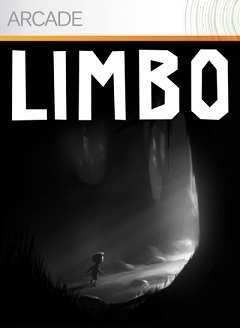 Theologically, limbo exists as a state of divine neutrality, a residence
between heaven and hell. Limbo by Playdead Studios displays this fuzzy
pseudo-reality in its presentation, but with a sinister twist. This
limbo can be cruel, grewsome and even downright evil. Bear traps randomly lie on the
ground, forever waiting just for you alone to trigger them. Giant spiders
hide in caves, hoping you'll wander close enough for them to skewer with their giant
legs. In Limbo, ghost children satisfy their concept of play by setting
up guilottines and buzzsaws to shred you. This game is in no way particularly kind.
Theologically, limbo exists as a state of divine neutrality, a residence
between heaven and hell. Limbo by Playdead Studios displays this fuzzy
pseudo-reality in its presentation, but with a sinister twist. This
limbo can be cruel, grewsome and even downright evil. Bear traps randomly lie on the
ground, forever waiting just for you alone to trigger them. Giant spiders
hide in caves, hoping you'll wander close enough for them to skewer with their giant
legs. In Limbo, ghost children satisfy their concept of play by setting
up guilottines and buzzsaws to shred you. This game is in no way particularly kind.
However, that cruel nature only adds to the atmosphere as the player must remain constantly aware of the presense of death in this bizarre, mysterious minimalist world. In this world and state of existence, death is the norm. Beginning as a stylistic proof of concept by a disgruntled game artist named Arnt Jensen, the concept soon flourished into a full game as Jensen subsequently co-founded Playdead Studios with Dino Patti to develop his idea. Originally planned for a PC release, Playdead was able to procure Dutch government grants and investor support while eventually deciding on an Xbox Live Arcade release, likely to avoid piracy worries and possibly for 360 exclusivity bonuses provided by Microsoft. The game eventually released this summer on July 21st during the 360's "Summer of Arcade." So, how does the final product match atmosphere and action? Does the constant presence of death help or hurt player mood and motivation? Let's take a deeper look and try to decide.
Trine
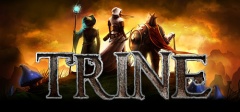 Trine is the kind of game you can't help but wish came along more often, as a rare legitimate platformer. Frozenbyte (along with certain notable indie developers) shows us that 2d platforming is in fact not dead and can be pushed as far as you'll willing to take it. Perhaps most impressively, Trine is in elite company as one of the few download-centric titles that could be mistaken as a traditional retail release.
Trine is the kind of game you can't help but wish came along more often, as a rare legitimate platformer. Frozenbyte (along with certain notable indie developers) shows us that 2d platforming is in fact not dead and can be pushed as far as you'll willing to take it. Perhaps most impressively, Trine is in elite company as one of the few download-centric titles that could be mistaken as a traditional retail release.
For example, check a screenshot of some random game. You likely see an area with a background, or maybe walls or repeating buildings. Perhaps an enemy or two are in the frame and an interactive objects of note. Now take a look at random screenshot of Trine. You see a struggling forest that has been encroached on by both technology and a plague of death. The foreground partially hides you in sparse blades of grass, a handful of flowers, and a large warped tree root. In the background, multiple metallic gears are encrusted into the hill, which is itself overlooked by a towering mountain. The sunlight beaming from above onto wild mushrooms is nothing but welcoming as your knight just escaped from the cave and is heading to a well-constructed but still wobbly bridge up ahead. While one could say such lush descriptions could be extrapolated out of any image; to me, the difference is clear. Trine tries to feed your imagination and create an organic, living environment. While the experience does not stay fully fresh the entire way, Trine has more than enough creativity and character to deserve a second look, as noted in our earlier first hour playthrough.
Metroid: Other M
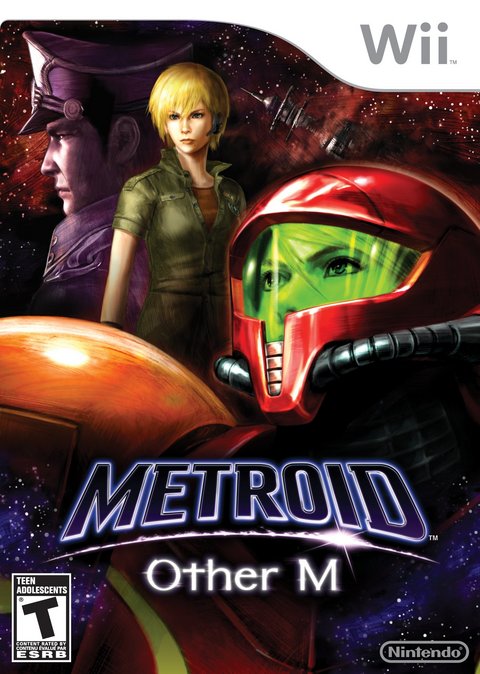 Metroid has never been one of Nintendo's big money-makers, but that
hasn't stopped the franchise from garnering some very devoted fans. It's
not uncommon to see Super Metroid or Metroid Prime sitting atop the
list of favorites from hardcore gamers, and for good reason. Super
Metroid provided a sprawling, interlacing realm of disquieting alien
dangers and secrets, and Metroid Prime translated that experience into
3D with incredible audio-visual design and some interesting
world-building mechanics built right into the gameplay.
Metroid has never been one of Nintendo's big money-makers, but that
hasn't stopped the franchise from garnering some very devoted fans. It's
not uncommon to see Super Metroid or Metroid Prime sitting atop the
list of favorites from hardcore gamers, and for good reason. Super
Metroid provided a sprawling, interlacing realm of disquieting alien
dangers and secrets, and Metroid Prime translated that experience into
3D with incredible audio-visual design and some interesting
world-building mechanics built right into the gameplay.
Though
there's certainly a base blueprint from these two trailblazers, no two
Metroid games feel exactly alike. Even so, I've found something to love
in each and every one of them (except for the antiquated debut NES game,
which admittedly I just played for the first time days before Other M's
release). The tension of being hunted in Fusion, the sudden shifts in
power at Zero Mission's final hour, the thousands of text logs scattered
through the Prime series...as far as I'm concerned, it's all great
stuff.
It's only natural that the formula would see some alterations and evolutions over a quarter of a century, and Metroid: Other M is the latest and most radical experiment to come out of Nintendo's R&D labs in quite some time. Featuring third-person 3D action gameplay and a heavy emphasis on cinematic storytelling, the curiously-subtitled Other M certainly feels very different from its predecessors. It seems to take after Metroid Fusion the most, with a bit of Metroid Prime in there as well, but Other M's additions and adaptations certainly make it feel distinct, for better or worse.
The Saboteur
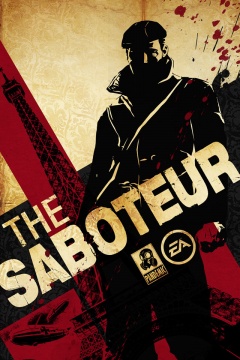 I
don’t think I’ve ever played a game and honestly felt sad that the
developer was no longer around, but that’s exactly what happened after I
beat Pandemic Studios’ swan song, The Saboteur. I had an honestly great
time with a flawed game, which is the opposite experience I’ve had with
similar games in the genre.
I
don’t think I’ve ever played a game and honestly felt sad that the
developer was no longer around, but that’s exactly what happened after I
beat Pandemic Studios’ swan song, The Saboteur. I had an honestly great
time with a flawed game, which is the opposite experience I’ve had with
similar games in the genre.
The Saboteur is pretty much the quintessential First Hour game: I played the first hour of the game a few months back, loved it, but had to send it back to my brother-in-law. A few months later I had the opportunity to borrow it again and jumped at the chance. When I said I wanted to keep playing, I really did.
Without much further ado, The Saboteur was released on the Xbox 360, PlayStation 3, and Windows, and while the game seems to hint at future sequels, with the studio closing it is doubtful those will ever appear. But you never know, I’m assuming EA owns the license to the game and characters so they might trudge up good old Sean Devlin again someday.
My full review is on the Xbox 360 version.
Half-Life 2
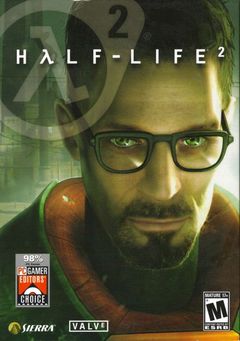 It's hard to find a gamer who doesn't have some experience with the Half-Life franchise. A champion of PC software when things started shifting heavily in the favor of consoles, the original Half-Life wowed critics with its pulse-pounding scripted sequences and seamless stitching of narrative and gameplay in first-person. The long-awaited full sequel, Half-Life 2, received just as many accolades, if not more, for its advances in artificial intelligence, character animation, and especially the robust physics engine powering the game's many objects.
It's hard to find a gamer who doesn't have some experience with the Half-Life franchise. A champion of PC software when things started shifting heavily in the favor of consoles, the original Half-Life wowed critics with its pulse-pounding scripted sequences and seamless stitching of narrative and gameplay in first-person. The long-awaited full sequel, Half-Life 2, received just as many accolades, if not more, for its advances in artificial intelligence, character animation, and especially the robust physics engine powering the game's many objects.
And yet, it was only two weeks ago that I first experienced a game in Valve's flagship franchise myself. I've never been much of a PC gamer: I can count the number of games I've played on a computer monitor on one hand, and four of them begin with the words "Star Wars." I've had many consoles in my life, but rarely a PC with the power to play current games. I'm actually typing this on a Macbook right now, and as we all know, Macs just aren't for gamers.
That said, Valve has made an effort to bite into the Apple market with Mac versions of Steam and many of its own big games offered therein, just in time for the annual 4th of July sales on the incredible digital distribution service. And if Valve is willing to create a Mac version of Half-Life 2 and price it at an outrageously fair $3.39 just for me, then I guess I owe it to them to try the game that millions have gone headcrab-crazy for.
But for all its fame and glory, the bottom line is that Half-Life 2 is a six-year-old PC game in a genre I'm not terribly enthralled by. Did I hate it? Hit the jump, smash that caps lock key and ready your profane comments, PC fanboys, because I'm about to tear into your beloved Half-Life 2 like a shotgun into an antlion.
Mario Strikers Charged
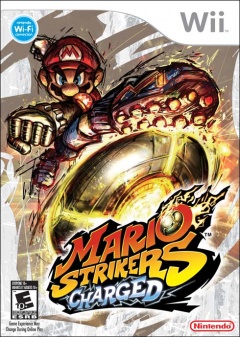 Professional athletes who excel at multiple sports are understandably
rare. The ideal body proportions of an offensive lineman and a power
forward are basically inverse. The abilities and skills required by a
closing pitcher and a starting goaltender are worlds apart. And who
could possibly have enough time to devote their training and competitive
passion to two separate sports seasons that last six months or more
each year? Ask a sports buff if any athletes have made an impact on two
different sports, and they'll probably answer with Bo Jackson, Deion
Sanders, and possibly Michael Jordan with a sneer.
Professional athletes who excel at multiple sports are understandably
rare. The ideal body proportions of an offensive lineman and a power
forward are basically inverse. The abilities and skills required by a
closing pitcher and a starting goaltender are worlds apart. And who
could possibly have enough time to devote their training and competitive
passion to two separate sports seasons that last six months or more
each year? Ask a sports buff if any athletes have made an impact on two
different sports, and they'll probably answer with Bo Jackson, Deion
Sanders, and possibly Michael Jordan with a sneer.
Ask a gamer,
however, and the only answer will be Mario. Ever since the platforming
plumber took up golf in 1991's NES Open Tournament Golf, Mario's been
blazing a trail across athletic endeavors that none could possibly
match, serving up scorchers with his tennis racket in one hand and
palming a basketball in the other. The Italian even competes under his
own personal flag in both the Summer and the Winter Olympic
Games. And next year, Mario will be adding Dodgeball to his list with
the launch of Mario Sports Mix, which will also feature the gaming
icon's return to Volleyball, Hockey, and Basketball. Even with his
talents spread so thin, critics have mostly praised Mario's spinoff
sports titles for their sufficient gameplay and charming Mushroom
Kingdom aesthetic.
Somebody forgot to tell Next Level Games about that Mushroom Kingdom charm, however, as the Canadian developer decided to go a drastically different route for their take on Mario playing Soccer, Mario Strikers Charged. Sure, Mario and his assortment of friends with mustaches and crowns all show up, as do the requisite mushrooms, shells, and stars, but something seems to have deeply upset the usually benevolent bunch: smiles turn to scowls, frilly dresses are traded for form-fitting battle armor, and the good-natured teasing is replaced with some outright lewd gestures. The tone may have taken a turn for the drab, but there is still plenty of fun to be had with this bizarre Mario Sports title.
Mario & Luigi: Bowser's Inside Story
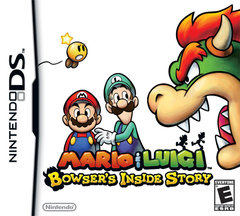 If there's a series I lost track of over the years it's Mario RPG,
which is really now made up of two series. After the original Super
Mario RPG: Legend of the Seven Stars on the SNES, Nintendo split up
their new Square-spawned role-playing series between their consoles and
portables. The curious Paper Mario started off on the Nintendo 64 and
the even curiouser Mario & Luigi kicked off with Superstar Saga on
the Game Boy Advance.
If there's a series I lost track of over the years it's Mario RPG,
which is really now made up of two series. After the original Super
Mario RPG: Legend of the Seven Stars on the SNES, Nintendo split up
their new Square-spawned role-playing series between their consoles and
portables. The curious Paper Mario started off on the Nintendo 64 and
the even curiouser Mario & Luigi kicked off with Superstar Saga on
the Game Boy Advance.
While I had loved the original Super Mario
RPG, I had a bit more trouble getting into Paper Mario. I played
through most of the game, but after watching my cousin beat it from
start to finish over a long weekend, I packed it away for good. And
for whatever reason, I never played any games from the Mario &
Luigi series... until now.
Mario & Luigi: Bowser's Inside
Story was getting great reviews so I added it to my Christmas list on a
whim. I received it, surprisingly, and added it to my portable gaming
queue, and after forcing myself to finally beat Zelda: Spirit Tracks
and read through the long Miles Edgeworth game, I finally landed on
Bowser's Inside Story. Why the heck did I wait so long?
BioShock 2
The sequel to the original BioShock has finally arrived, and boy, is it good! BioShock 2 returns the player to Rapture, the underwater city dreamed up by Objectivist Andrew Ryan. Many gamers were skeptical of the need for a sequel, myself included, but developer 2K Marin made me a believer.
I'm not sure how much more I can say without actually reviewing the game, so let's just get into that. As usual, the multiplayer aspect of the game will not factor into my final opinion very much but I did play it for some time and will provide my thoughts on it. This review is based on the Xbox 360 version that 2K Games provided me a review copy of. I am also a big fan of the first game and you can read my review and thoughts on the original BioShock for comparison if you'd like.
Finally, check out the first hour review of BioShock 2 if you're interested.

